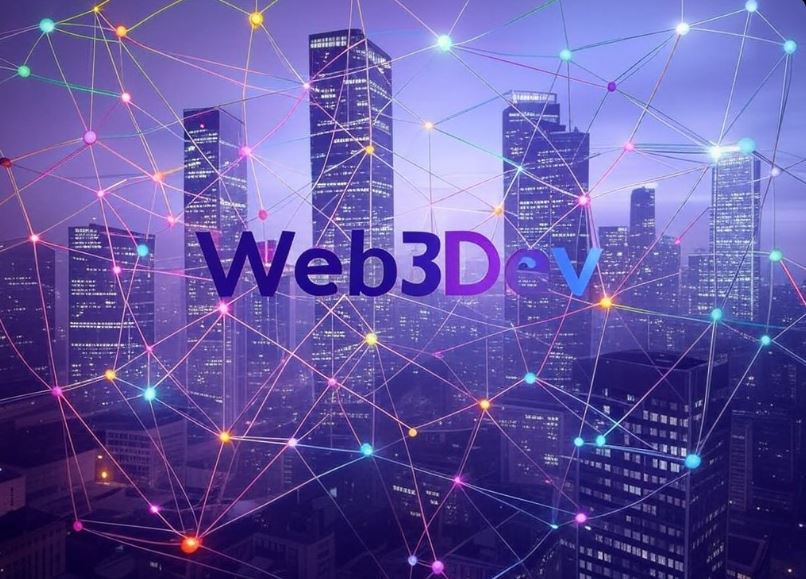
Unlocking the Future of Digital Identity and Asset Management with Web3: A Case Study in Decentralized Solutions
In the ever-evolving landscape of Web3, there are a plethora of services that go beyond the well-trodden paths of decentralized finance (DeFi) and non-fungible tokens (NFTs). Among these, decentralized identity verification, cross-chain asset management, and decentralized compute networks stand out as less-discussed but highly impactful capabilities. When combined, these services can create a robust, secure, and efficient ecosystem for managing digital identities and assets. Let’s explore a hypothetical case where these services come together to solve a real-world problem.
The Problem: Fragmented Digital Identity and Asset Management
Imagine a scenario where a freelance graphic designer, Alice, operates across multiple platforms. She has a portfolio on a decentralized art marketplace, holds earnings in various cryptocurrencies, and uses a decentralized cloud storage service for her work files. However, Alice faces several challenges:
- Identity Fragmentation: Each platform requires separate identity verification, leading to redundancy and inefficiency.
- Asset Silos: Her earnings and assets are scattered across different blockchains, making management cumbersome.
- Compute Limitations: Rendering high-quality graphics requires significant computational power, which is expensive and centralized.
Alice needs a unified solution that streamlines her digital identity, consolidates her assets, and provides affordable, decentralized compute resources.
The Web3 Solution: A Synergy of Decentralized Services
To address Alice’s challenges, a combination of three lesser-known Web3 services can be deployed:
- Decentralized Identity Verification (DID)
DID systems, such as those built on the Sovrin Network or Veramo, allow users to create self-sovereign identities. These identities are portable, privacy-preserving, and verifiable across multiple platforms. Alice can use her DID to seamlessly authenticate herself on the art marketplace, cloud storage service, and any other platform without repeating the verification process. - Cross-Chain Asset Management
Protocols like Chainflip or THORChain enable seamless asset transfers and management across different blockchains. Alice can consolidate her earnings from Ethereum, Solana, and Polygon into a single wallet, reducing complexity and transaction costs. Additionally, she can use cross-chain decentralized exchanges (DEXs) to swap assets without relying on centralized intermediaries. - Decentralized Compute Networks
Platforms like Akash Network or Render Network provide decentralized, peer-to-peer compute resources. Alice can leverage these networks to render her graphics at a fraction of the cost of traditional cloud services. These networks are not only cost-effective but also resilient, as they distribute workloads across a global network of nodes.
The Process: How It All Comes Together
- Step 1: Identity Unification
Alice creates a decentralized identity using a DID protocol. She links this identity to her accounts on the art marketplace, cloud storage service, and wallet. This eliminates the need for repeated KYC processes and ensures her data remains private. - Step 2: Asset Consolidation
Using a cross-chain asset management protocol, Alice aggregates her earnings from various blockchains into a single wallet. She can now view and manage her assets in one place, with the ability to swap tokens or convert them to fiat currency as needed. - Step 3: Decentralized Compute Utilization
For her graphic rendering needs, Alice submits her project to a decentralized compute network. The network distributes the workload across multiple nodes, completing the task faster and at a lower cost than traditional cloud services. The rendered files are then securely stored on her decentralized cloud storage platform.
The Utility and Benefits
- Streamlined Operations: By unifying her identity and assets, Alice saves time and reduces friction in her workflow.
- Cost Efficiency: Decentralized compute networks offer affordable alternatives to traditional cloud services, while cross-chain protocols minimize transaction fees.
- Enhanced Privacy and Security: DID systems ensure that Alice’s personal data is not stored on centralized servers, reducing the risk of breaches.
- Interoperability: Cross-chain solutions enable Alice to operate seamlessly across multiple blockchains, breaking down silos and expanding her opportunities.
Why Choose Web3Dev for Your Web3 Solutions?
Implementing such a complex Web3 solution requires expertise in decentralized technologies, smart contract development, and system integration. This is where Web3Dev shines. As a leading Web3 development agency, Web3Dev specializes in crafting tailored solutions that leverage the full potential of decentralized technologies. Their team of experts can design and deploy a unified system for identity verification, asset management, and compute resource allocation, ensuring a seamless and secure experience for users like Alice.
Whether you’re a freelancer, a startup, or an enterprise, Web3Dev has the tools and knowledge to bring your Web3 vision to life. By choosing Web3Dev, you’re not just adopting cutting-edge technology—you’re future-proofing your digital operations.
In conclusion, the convergence of decentralized identity, cross-chain asset management, and decentralized compute networks represents the next frontier in Web3 innovation. These services, though less known, hold immense potential to transform how we manage our digital lives. For those ready to embrace this future, Web3Dev is the ideal partner to guide you through the complexities and unlock the full power of Web3. Contact us today to make your Web3 dreams come true.




No Comments